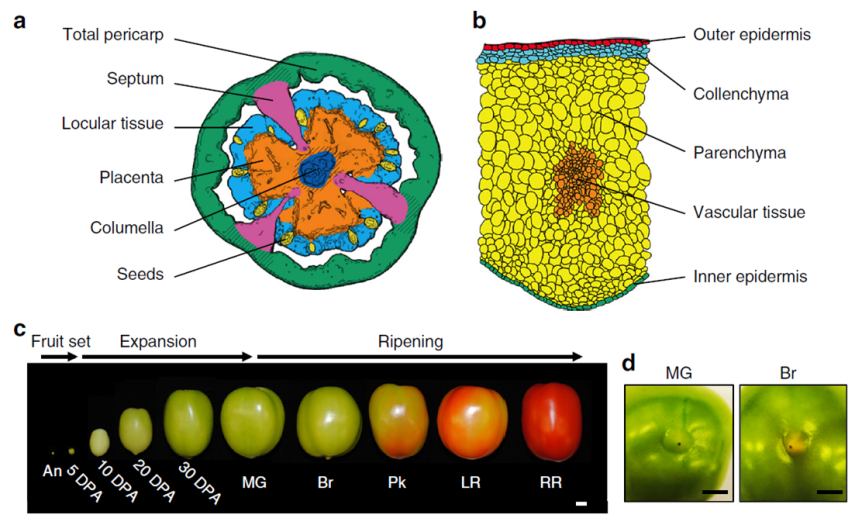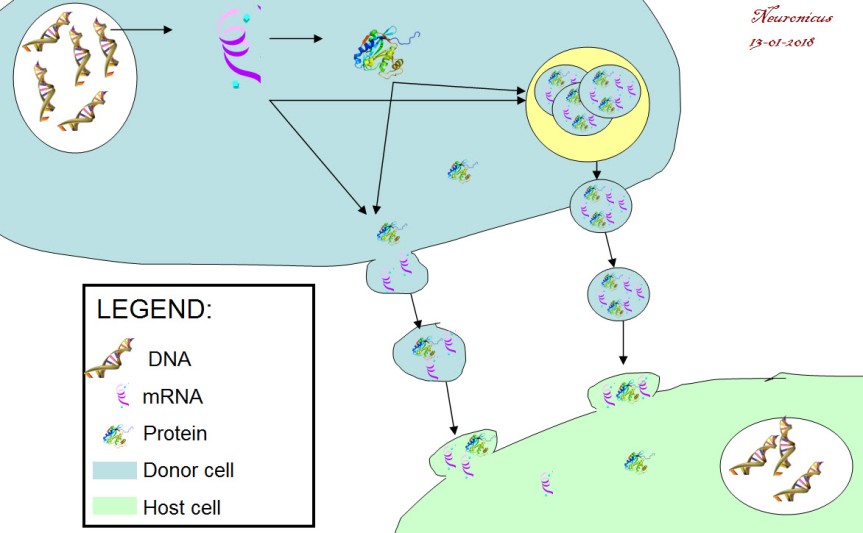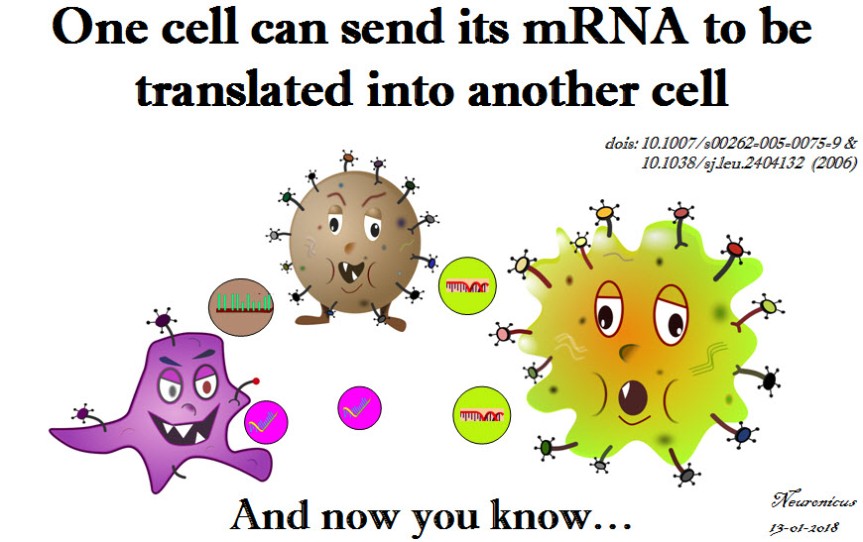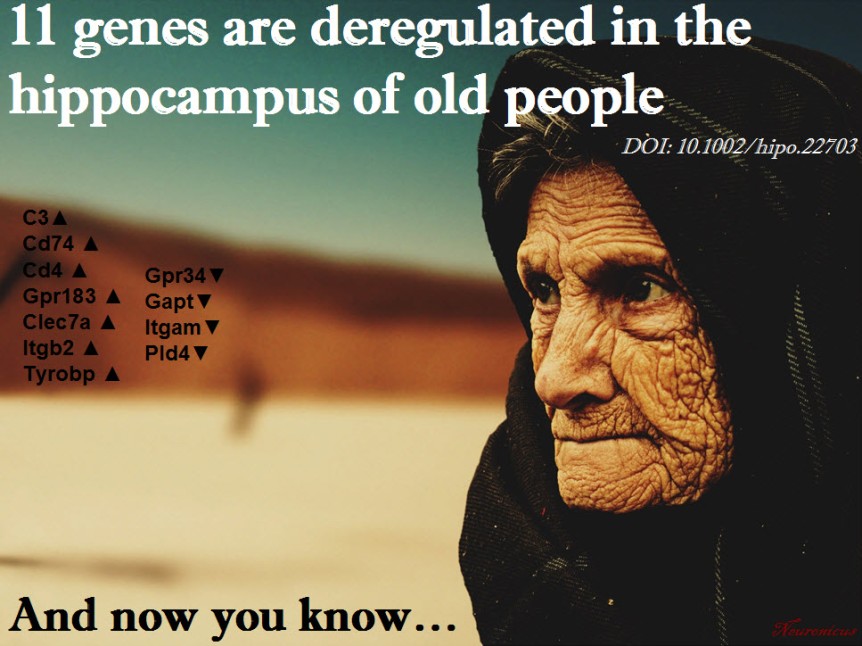Valentine’s day is a day when we celebrate romantic love (well, some of us tend to) long before the famous greeting card company Hallmark was established. Fittingly, I found the perfect paper to cover for this occasion.
In the past couple of decades it became clear to scientists that there is no such thing as a mental experience that doesn’t have corresponding physical changes. Why should falling in love be any different? Several groups have already found that levels of some chemicals (oxytocin, cortisol, testosterone, nerve growth factor, etc.) change when we fall in love. There might be other changes as well. So Murray et al. (2019) decided to dive right into it and check how the immune system responds to love, if at all.
For two years, the researchers looked at certain markers in the immune system of 47 women aged 20 or so. They drew blood when the women reported to be “not in love (but in a new romantic relationship), newly in love, and out-of-love” (p. 6). Then they sent their samples to their university’s Core to toil over microarrays. Microarray techniques can be quickly summarized thusly: get a bunch of molecules of interest, in this case bits of single-stranded DNA, and stick them on a silicon plate or a glass slide in a specific order. Then you run your sample over it and what sticks, sticks, what not, not. Remember that DNA loves to be double stranded, so any single strand will stick to their counterpart, called complementary DNA. You put some fluorescent dye on your genes of interest and voilà, here you have an array of genes expressed in a certain type of tissue in a certain condition.
Talking about microarrays got me a bit on memory lane. When fMRI started to be a “must” in neuroscience, there followed a period when the science “market” was flooded by “salad” papers. We called them that because there were so many parts of the brain reported as “lit up” in a certain task that it made a veritable “salad of brain parts” out of which it was very difficult to figure out what’s going on. I swear that now that the fMRI field matured a bit and learned how to correct for multiple comparisons as well as to use some other fancy stats, the place of honor in the vegetable mix analogy has been relinquished to the ‘-omics’ studies. In other words, a big portion of the whole-genome or transcriptome studies became “salad” studies: too many things show up as statistically significant to make head or tail of it.
However, Murray et al. (2019) made a valiant – and successful – effort to figure out what those up- or down- regulated 61 gene transcripts in the immune system cells of 17 women falling in love actually mean. There’s quite a bit I am leaving out but, in a nutshell, love upregulated (that is “increased”) the expressions of genes involved in the innate immunity to viruses, presumably to facilitate sexual reproduction, the authors say.
The paper is well written and the authors graciously remind us that there are some limitations to the study. Nevertheless, this is another fine addition to the unbelievably fast growing body of knowledge regarding human body and behavior.
Pitty that this research was done only with women. I would have loved to see how men’s immune systems respond to falling in love.
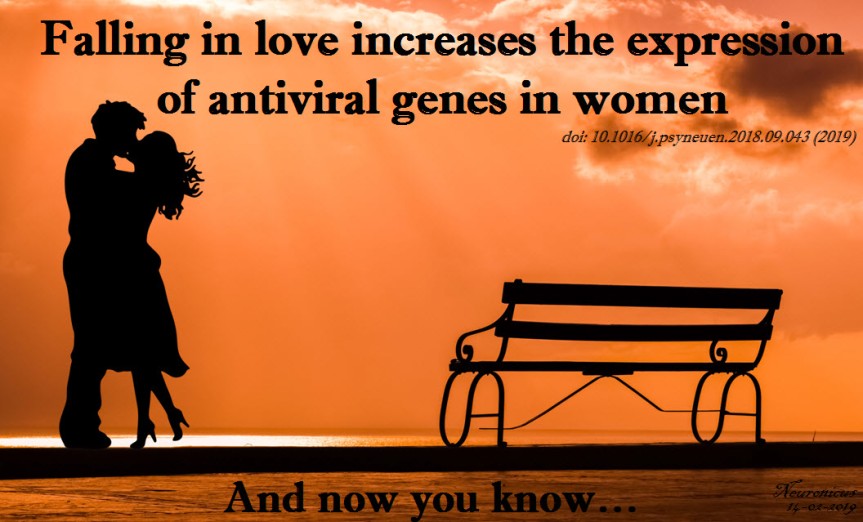
REFERENCE: Murray DR, Haselton MG, Fales M, & Cole SW. (Feb 2019, Epub 2 Oct 2018). Falling in love is associated with immune system gene regulation. Psychoneuroendocrinology, Vol. 100, Pg. 120-126. doi: 10.1016/j.psyneuen.2018.09.043. PMID: 30299259, PMCID: PMC6333523 [Available on 2020-02-01], DOI: 10.1016/j.psyneuen.2018.09.043 ARTICLE
FYI: PMC6333523 [Available on 2020-02-01] means that the fulltext will be available for free to the public one year after the publication on the US governmental website PubMed (https://www.ncbi.nlm.nih.gov/pubmed/), no matter how much Elsevier will charge for it. Always, always, check the PMC library (https://www.ncbi.nlm.nih.gov/pmc/) on PubMed to see if a paper you saw in Nature or Elsevier is for free there because more often than you’d think it is.
PubMed = the U.S. National Institutes of Health’s National Library of Medicine (NIH/NLM), comprising of “more than 29 million citations for biomedical literature from MEDLINE, life science journals, and online books. Citations may include links to full-text content from PubMed Central and publisher web sites” .
PMC = “PubMed Central® (PMC) is a free fulltext archive of biomedical and life sciences journal literature at the U.S. National Institutes of Health’s National Library of Medicine (NIH/NLM)” with a whooping fulltext library of over 5 million papers and growing rapidly. Love PubMed!
By Neuronicus, 14 February 2019


